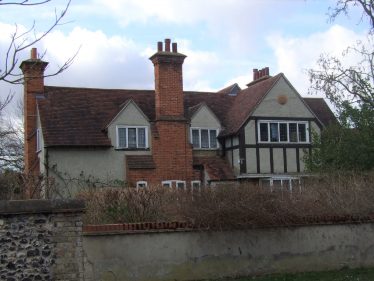The Homestead, 73 High Street: Exterior and Interior Design

https://iiif.library.utoronto.ca/image/v2/musiclibrary:1479/full/full/0/default.jpg
![The Homestead, 1925 [Image] The Homestead, 1925 | University of Toronto, Faculty of Music Library](https://dd5o9ssmlz8kk.cloudfront.net/wp-content/uploads/2021/12/archive.org-photo-0513-374x276.jpg)
![The Homestead, 1925 [Image] The Homestead, 1925 | University of Toronto, Faculty of Music Library](https://dd5o9ssmlz8kk.cloudfront.net/wp-content/uploads/2021/12/archive.org-photo-0513-2-374x278.jpg)
![The Homestead, 1925 [Image] The Homestead, 1925 | University of Toronto, Faculty of Music Library](https://dd5o9ssmlz8kk.cloudfront.net/wp-content/uploads/2021/12/archive.org-photo-0513-3-1925-374x275.jpg)
![The Interior of The Homestead, 1925 [Image] The Interior of The Homestead, 1925 | University of Toronto, Faculty of Music Library](https://dd5o9ssmlz8kk.cloudfront.net/wp-content/uploads/2021/12/Screenshot-2021-12-19-134354-374x306.jpg)
![The Interior of The Homestead, 1925 [Image] The Interior of The Homestead, 1925 | University of Toronto, Faculty of Music Library](https://dd5o9ssmlz8kk.cloudfront.net/wp-content/uploads/2021/12/Screenshot-2021-12-19-134430-374x295.jpg)
![The interior of The Homestead [Image] The Interior of The Homestead Circa 1920s | University of Toronto, Faculty of Music Library](https://dd5o9ssmlz8kk.cloudfront.net/wp-content/uploads/2021/12/Screenshot-2021-12-19-110630-374x272.jpg)








![Canterbury Tales stained glass window at The Homestead [Image] Canterbury Tales stained glass window. Undated. | Jane Poole](https://dd5o9ssmlz8kk.cloudfront.net/wp-content/uploads/2021/09/canterbury-tales-stained-glass-2-374x281.jpg)
Introduction
In 1904 the Mortlock family built The Homestead next door to The Gables, another of their properties. Its design was representative of the Arts and Crafts Movement. Photographs of both houses show similarities even though they were designed by different architects. The London connection and lifestyle of the Mortlock family may have had an influence on the design of all their properties, keeping them ‘in trend’ with the current fashion.
Description
The building’s exterior is mainly brick with roughcast rendering and wooden timber framing to the first floor of the cross wing. It has a steep pitched tiled roof with stacked chimneys, one on the front and one at the side of the building. It has two gable eaves dormers which have flush free casements with three leaded light windows. The cross wing is also two storey and has exposed timber framing. There are five leaded light windows on the first floor and a bay window on the ground floor at the front.
1904
Originally, the front door was wooden, standing within a porch with a lean-to tiled roof. Beside it stands the brick chimney serving the fireplace in the hall. The stairs towards the front of the house were wooden and turned through 90° to reach the landing. There was a contemporary style wooden handrail. The rear of the building had character as well, with casement leaded light windows.
The floor plan arrangement of the house in 1904 included, on the ground floor, two reception rooms, a lounge and a hall with a fireplace, plus a kitchen. The first floor had very low ceilings and dormer windows in some of the rooms. It had four bedrooms, a bathroom and a WC.
1912-1925
From 1912 to 1925, the house was initially rented and then owned by Kathleen Parlow and her mother Minnie. Kathleen was a young, world famous violinist. During this period there was a small square room with white walls lined with low white bookshelves, making a pleasant bright living room. The stuffed chairs and sofas were covered in bright chintz material. The living room opened out onto the large rear garden, which had chairs placed under the trees.
The kitchen was a typical working kitchen of that time with tiled floors, wooden scrubbed surfaces, many shelves, a cooking range and a large wooden kitchen table. There was a servants’ bell board in the kitchen, which is still there 100 years on. In 1919 the house did not have electricity. Kathleen and her mother, Minnie, preferred to use candelabra. Minnie at that time refused to use oil lamps!
A friend of Kathleen Parlow described the house in 1919 as standing in beautiful gardens with a small front garden full of flowers with acres of orchard and meadow at the rear. There was also a croquet lawn. (See the downloadable file below.)
Kathleen had a room added in the back garden to use as a music room for her violin practice. This was a separate, attractively furnished, brick building. The actual measurements of the main house were recorded by Kathleen’s friend as being “75 ft facing the street and 120ft in depth”.
1925 -1952
There is very little evidence that the house changed greatly during this period. Henry Woods and his wife Ethel, who bought the house in 1925, had no real need to make alterations. They were both academics working in Cambridge and the house served as their country house during this period. This is probably why so much of its charming history remains today.
1952 -1999
When William Ilsley and his wife Christine moved into The Homestead in 1952 they immediately turned the house into a nursing home. Initially they used the existing bedrooms.
In 1985 The Homestead was registered as a Grade 2 Listed Building. Three years later a flat roofed extension was built to the right and rear of the house.
In 1998 a second extension was built on the side of the first extension. This was commissioned by the then owners, David and Beverley Grace who renamed the nursing home Maycroft Nursing Home, a name that still exists today. The extension added a further 25 bedrooms. William Ilsley, the previous owner, was apparently involved in the design of this extension which was made from red brick and dark wooden windows. The architect/builder was said to be Mr Chapman from Melbourn.
2000 to the present day
The next big change to the building was in 2017 when work started on a new detached nursing home at the rear of the original property, overseen by the current owners Advinia Healthcare.
Unfortunately, the original house has gradually fallen into disrepair but we hope that it will be restored one day.
More photographs of The Homestead are available in the University of Toronto Music Library archive.





No Comments
Add a comment about this page